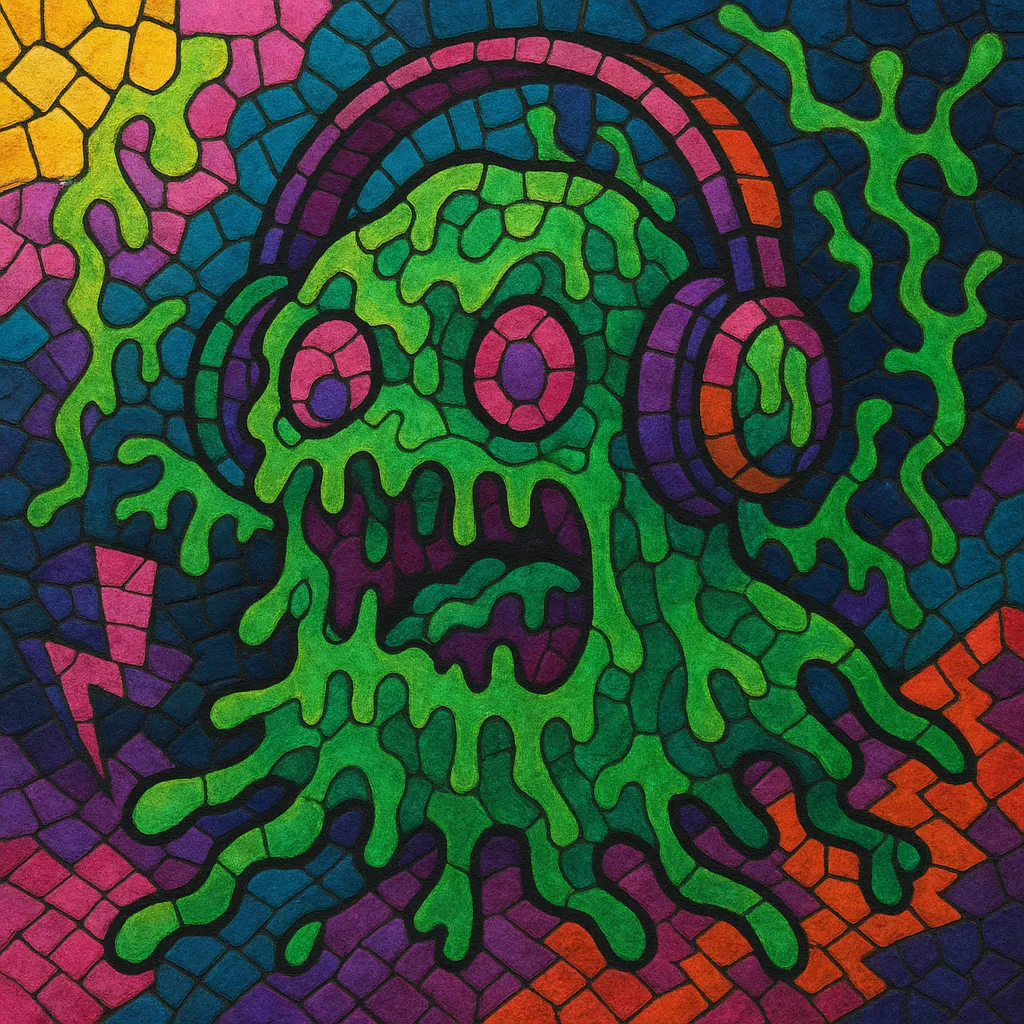Slimepunk is an internet-born microgenre that fuses the hyper-saturated textures of vaporwave-era net music with the velocity and abrasion of breakcore, digital hardcore, and punk. Its sound favors blown-out drums, maximally clipped mixdowns, candy-coated melodies, and sudden left turns, capturing both the chaotic energy of DIY punk and the playful, neon gloss of online aesthetics.
Typical tracks pair frenetic breakbeats or half-time trap grooves with chiptune timbres, mangled samples, and pitch-shifted vocals that dart between cute, deadpan, and snarling. The result is a noisy, high-impact, and deliberately synthetic style that celebrates the unstable, meme-native sensibility of the modern web while remaining danceable and hook-driven.
Slimepunk emerged in the mid-to-late 2010s as a community-driven, online-first response to the maximalist tendencies brewing in net music. It drew from vaporwave’s internet-native ethos and seapunk’s glossy, aquatic futurism, while embracing the speed, distortion, and DIY aggression of breakcore, lolicore, digital hardcore, and punk. Early tracks circulated on SoundCloud, Bandcamp, and Discord servers, where producers traded presets, drum breaks, and visual motifs (slime-green palettes, cartoonish UI, and messy, playful typography).
As the scene matured, producers leaned into compressed, clipping drum buses; amen or custom break edits at 160–190 BPM; sugary, video-game-adjacent leads; and extreme vocal processing (formant shifts, robotized auto-tune, and nightcore-style pitching). Short song forms, stinger transitions, and meme-literate sampling created a jittery, collage-like momentum. The guiding principle became contrast: cute vs. caustic, hooky vs. chaotic.
By the late 2010s and early 2020s, slimepunk aesthetics overlapped with hyperpop and digicore communities, as well as pockets of experimental club culture. This cross-pollination refined its pop instincts (bigger hooks, brighter sound design) without abandoning its punky, hands-on production values. Though still a niche tag, its influence can be heard across contemporary online pop and rap micro-scenes.
Slimepunk remains decentralized: releases often arrive as singles, EPs, and compilations on small labels or collective Bandcamps, with visual art and video loops carrying as much weight as the audio. The culture values openness, speed, and experimentation—inviting newcomers to learn by doing, sharing project files, and iterating in public.


